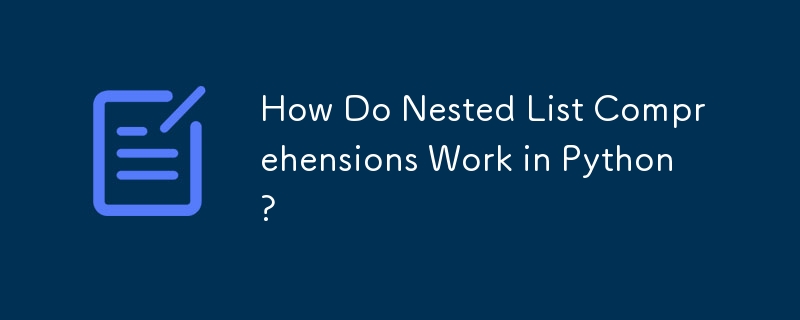

Understanding Nested List Comprehensions
In Python, list comprehensions are a concise way to create lists by iterating over other sequences. While simple list comprehensions involving single-level iterations are straightforward, nested list comprehensions can be more perplexing.
Syntax and Interpretation
Consider the following nested comprehension:
a = [[1, 2], [3, 4], [5, 6]] b = [x for xs in a for x in xs]
This comprehension creates a new list b by iterating through the elements of a, which is a list of lists. The outer loop (for xs in a) iterates through each inner list, while the inner loop (for x in xs) iterates through each element in the inner list.
Unrolling the Loops
The key to understanding nested list comprehensions is to visualize the loops as they execute, unrolling them as follows:
for x in [1, 2]:
for x in [3, 4]:
for x in [5, 6]:
yield xThis untangled loop represents the nested comprehension, demonstrating how it iterates through all the elements in the nested structure and yields the values for the resulting list b.
Generalization
The general rule for nested list comprehensions is that the loops execute in the order they are written, with the last index varying fastest. This allows for the creation of lists that contain elements from multiple levels of nested sequences.
Example Application
Nested list comprehensions can be useful for tasks such as:
The above is the detailed content of How Do Nested List Comprehensions Work in Python?. For more information, please follow other related articles on the PHP Chinese website!




